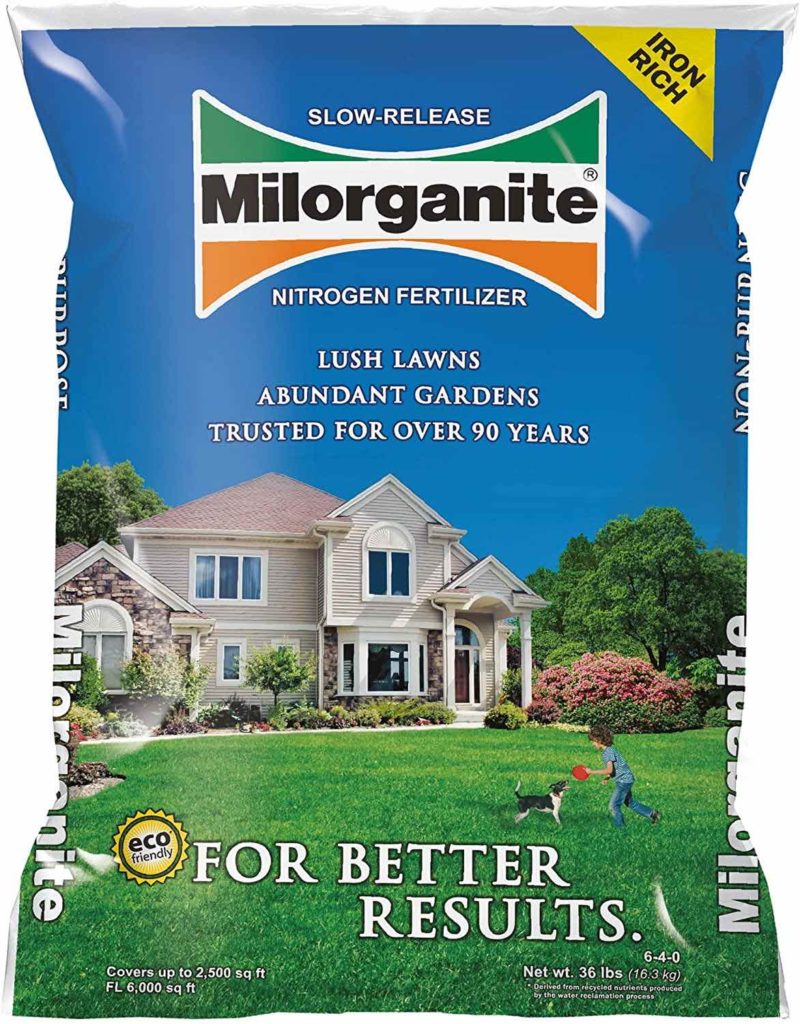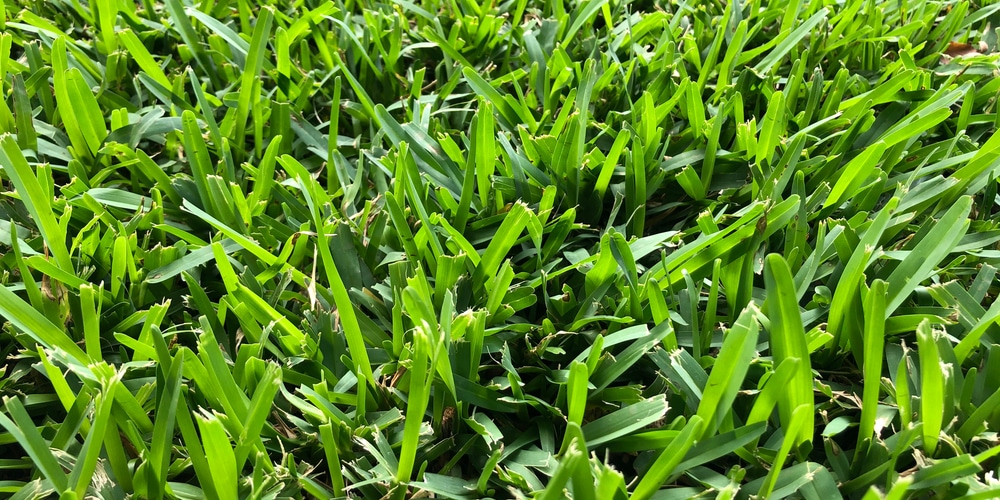Milorganite is a commonly used fertilizer that is great for all grass varieties. It’s particularly beneficial for St. Augustine grass as it contains essential nutrients such as nitrogen and iron. Regularly applying Milorganite to your lawn will help keep the grass in good health. It also helps to create a lovely green color. Let’s look at how to use Milorganite on a St Augustine lawn.
Milorganite is Good for a St Augustine Lawn

You can use Milorganite on your lawn four times a year to help the grass restore and maintain its health. Milorganite should be used during the growing season, which is from early spring to the fall, as St Augustine is a warm-season variety of grass. Don’t use Milorganite during the winter as your grass will be dormant. Milorganite works by feeding microbes in the soil, which release nutrients to feed your grass.
Using Milorganite is very beneficial for St. Augustine lawns as it won’t burn your grass. If you use the product too often, it could burn your lawn due to excess nitrogen. Use Milorganite four times a year to avoid these types of issues.
Milorganite is generally considered low risk and is safe to use on St. Augustine lawns. Many other fertilizers are more hazardous and can result in a nitrogen overload; as long as you don’t use too much Milorganite, you won’t have this problem. Overdosing on Milorganite will burn grass and pull the moisture from the grass, which will eventually cause your lawn to die.
Always read the label when using Milorganite or any other type of fertilizer. You can use 32 lbs of the product for every 2,500 square feet of lawn. If you overdo it when applying Milorganite, your lawn will suffer. You’ll find that your grass ends up weakened and looks unhealthy. Your grass may start to turn yellow and won’t grow well. Excess Milogranite can also cause pollution to your local area, as it will wash out of the soil and get into the waterways. This will cause pollution of your local ecosystem.
Even if your grass is yellow and struggling, apply the recommended amount of Milorganite. It is a slow-release fertilizer, so it makes take 7–14 days to see results. Remain patient, and you will see great results from Milorganite.
The Benefits of Milorganite
Milorganite is a sustainable product that is manufactured using recycled wastewater. The benefits of using Milorganite four times annually on a St. Augustine lawn is that it will encourage new growth and make your grass look green and healthy. Milorganite helps to enrich your soil and feed microbes which creates an overall healthier lawn.
Milorganite contains beneficial nutrients such as phosphorus and iron. Phosphorus helps to encourage healthy root growth, especially if you apply the product when laying new sod. It also contains iron to make St. Augustine grass greener. Milorganite is an excellent product as it releases nutrients into the soil for between eight and ten weeks.
How to Use Milorganite on St. Augustine Grass
It’s best to use Milorganite on your St. Augustine grass four times annually. Spaced out through the growing season will allow nutrients to be provided for your grass throughout the growing season. You don’t need to fertilize St. Augustine during the winter as it will become dormant.
You can apply Milorganite for the first time in early April when the weather starts to warm up, and your grass begins to grow again after being dormant all winter. The second application can be provided in late May, and the third in early September at the beginning of fall. You can provide your lawn with one last application of Miloganite in early October, approximately thirty days before the first frost.
Conclusion: Milorganite is Good for St Augustine Grass
Using Milorganite four times a year will provide your grass with a constant source of nutrients. This will help it thrive throughout the growing season. A healthy St. Augustine lawn will be stronger and more able to cope with hot weather and drought.
Milorganite is a natural product that is sustainable and gentle on St. Augustine grass. Always follow the instruction on the label to avoid overdoing it and burning or killing your grass.
